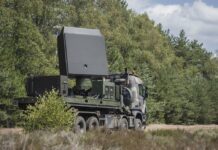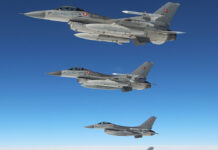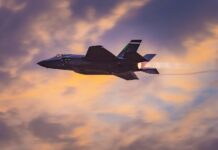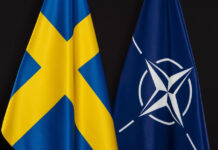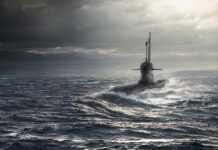As both the Commander of the Danish Ministry of Defence Acquisition and Logistics Organisation (DALO) and Danish National Armaments Director, Lieutenant General Kim Jesper Jörgensen entered office in February of this year. In this interview, he considers current tasks and programmes, as well as the prospects arising from the “Framework Agreement on Arctic Capabilities” concluded in February.
ESD: As far as the role, organisation and duties of DALO are concerned, is your organisation comparable to other defence procurement authorities like the French DGA, the Swedish FMV or the German BAAINBw? Apart from that, are there other organisations involved in defence procurement in Denmark?
Jörgensen: Well, first of all, when it comes to organisational structures, then I would rather not make a specific comparison with other organisations. To be quite honest, I have only been in this position for a few months, so I will not make an assessment if we are most like this or that organisation. But what I can tell is that we have the complete procurement responsibility when it comes to equipment and IT. And also the task of actually running the systems. I know at least one organisation that, at least at a first glance, seems to be quite similar to us- and that is the Dutch Defence Materiel Organisation (DMO). We have all the tasks connected with the acquisition of both equipment and IT for all services and also other agencies within the MoD, for instance the Federal Emergency Management Agency. I think that is as far as I can go when it comes to defining the organisation and when it comes to the organisation’s role as part of the acquisition process. And I would say that acquisition as such – that is the role of my organisation. But we have a very close relationship with our customers, as I would call them, the service headquarters, the headquarters of the Emergency Management Agency, etc. The same applies when it comes to industrial cooperation and cooperation with other government agencies. But the procurement function as such has been centralised in this organisation.
ESD: Over the past few years, a number of organisational and procedural changes for or in the Ministry of Defence have been implemented. Do any of these might have an influence on the procurement process? Can you briefly describe the current process and the entry points for companies wanting to do business with the Danish armed forces?
Jörgensen: First of all, when it comes to the organisational changes, the one thing I would like to point out is that besides the concentration of all the acquisition activities in this one organisation, the assignment of the National Armaments Director, which could be described as a departmental function, has also been delegated to this organisation. So we are in charge of both the acquisition part and that of the National Armaments Director. And when it comes to the point of entry for companies, Danish or foreign companies wanting to enter into a business relationship with the Danish Defence, or wanting to learn about our requirements, should all contact my front door, which is what we call the Industrial Cooperation Division or the Industrial Cooperation Office.
ESD: The procurement of the F-35 fighter is the most voluminous military acquisition in Danish history. Denmark received the first F-35 on 07 April 2021. Based on the GAO Report 21-226 which highlighted that the US DoD needs to update modernisation schedules and improve data on software development, there were some critical comments in this context. Do you see this as a major challenge for the programme and as a possible serious cost overrun that might affect other programmes?
Jörgensen: As you might know, I participated in the in the roll-out ceremony and the delivery ceremony of the first F-35 in Texas. Let me be very clear: We have full confidence in the F-35 programme. And we have full confidence in the leadership demonstrated by the Joint Programme Office (JPO) in managing the programme. Obviously, a programme of this magnitude will encounter a number of challenges, both in the development phase and during the production and sustainment phase, and that is only natural. We have made a similar experience with the F-16 programme. Today, we have more than 40 years of experience with that programme, and it has been a comparable experience: there have been challenges, which have had to be responded to in a very professional way. And that is why we are confident that with such an approach the challenges in the F-35 programme will be mastered, too, including the cost issues when it comes to the sustainment part of the programme. We have confidence that appropriate solutions will be found.
ESD: In February, the Danish Government tabled the framework agreement in support of strengthening the Danish defence capabilities in the Arctic and the North Atlantic. What capabilities exactly are to be improved? What is the expected financial volume of the programme and what are the implications for DALO’s work?
Jörgensen: Well, first of all, when it comes to the improvement of capability in the Arctic region since then, the focus is on surveillance, or you may call it domain awareness, namely surveillance and the associated command and control capability. So our first priority is getting a better overview of activities in the area, both in the Greenland area and the surrounding area. And also, when it comes to the Faroe Islands, north of Scotland, both islands are within the area of operations of the Arctic Command, which I had the pleasure of commanding until I assumed the present position. Due to the vastness of the area, surveillance and command and control are essential. So therefore, naturally, that is the focus of this capability improvement programme. When it comes to specific capabilities, then the political decision draws the outline of the capabilities that now are my responsibility to provide. The scope of capabilities includes satellite surveillance for maritime domain awareness, drones and UAVs for maritime surveillance and also ground surveillance, and different data links and communication systems linking the sensors, the headquarters and operational units. Also, there is the re-establishment of an air surveillance radar on the Faroe Islands. There was a radar station on the Faroe Islands during the Cold War. It was disbanded after the Cold War. Now the decision is to re-establish a radar station on the Faroe Islands in order to improve our air domain awareness. Included in the outline package is also a number of coastal radars. In Greenland, coastal radars focus again on maritime surveillance. Included in the package are also funds for increased exercise activity, for instance, units exercising disaster management operations in Greenland. Also as part of the package, there is funding for establishing a military basic training facility in Greenland. In Denmark as such, we have national service. There is no national service for young people in Greenland, but the intention is to establish a basic military training facility, so the young people in Greenland can volunteer in order to get basic military training and thereby, so to speak, get the entry ticket to participate in the defence of Greenland. I think that has been a rough outline of the capabilities included in the package.
ESD: Can you give us an idea about the projected time schedule for the entire effort?
Jörgensen: The funding as such will be available from 2023, so it is a question of planning the procurement efforts based on funds being available accordingly. Therefore, we are looking at least at the mid-twenties when it comes to several capabilities. That is all I can I say right now simply because we are not that advanced in the planning of details.
ESD: Which of your current programmes are carried out in partnership with other national or multinational procurement organisations?
Jörgensen: Well, I can give you a number of examples when it comes to procurement executed in multinational context. One of them is our new combat uniform system, the camouflage uniforms used by soldiers. And there we are in in the middle of a procurement process together with the other Nordic countries in the scope of the Nordic Defence Cooperation (NORDEFCO). I cannot disclose more details because we are in the middle of the procurement process here. That is one example of a procurement programme in a multinational context. Another example is a recent decision or contract to acquire anti-tank missiles, the SPIKE anti-tank missile system from Eurospike procured through the NATO Support and Procurement Agency (NSPA). These are the two latest examples that I can mention.
ESD: To what extent is the Danish defence industrial base capable of responding to the material requirements of the Danish armed forces? Are there areas where you have to rely on foreign contractors?
Jörgensen: Well, first of all, due to the limited size of our country and our population, there is a natural limit to to what extent our defence industry can fulfill our requirements, depending on which sector you are talking about. I think the sector where we are the most capable of providing for ourselves is the maritime sector, the shipbuilding sector. For various geographical and historical reasons, we have a well-developed maritime sector able to design and build ships within country. Of course, we need many subcontractors from abroad but the maritime sector, shipbuilding, is the one where we are most capable of supporting ourselves. When it comes to other sectors, the Danish defence industry is primarily employed as subcontractors to foreign main contractors. In my opinion and as far as I can see it, the Danish defence industry is capable of supporting or providing parts to a wide array of defence capabilities. But again, as I started out saying, when it comes to delivering complete systems and it is primarily the small scale programmes or the maritime sector.
ESD: Is there anything else you would like to comment on?
Jörgensen: Perhaps I should have started saying this first: As I told you, I assumed command here after having been the operational commander of the Joint Arctic Command, meaning that my background is operational; my background is not procurement. Instead, my background is operations and planning. And this means that I bring with me a perspective of the needs of the operational soldier, of the operational units. Therefore, it is very important for me that we have a close dialogue with the customers, meaning the operational soldiers and all the other customers we serve like the Emergency Management Agency, etc., so that we provide the solutions and the support needed by the operational units. And when you have operated in the Arctic, in a very limited infrastructure, you really get a first-hand experience of the importance of having the right gear and the right equipment and being able to support it in a very effective way. That kind of impression and experience is something I remember each and every day. And I am doing my utmost to make sure that we deliver the right service to the frontline personnel.
The interview was conducted by
Jürgen Hensel.





